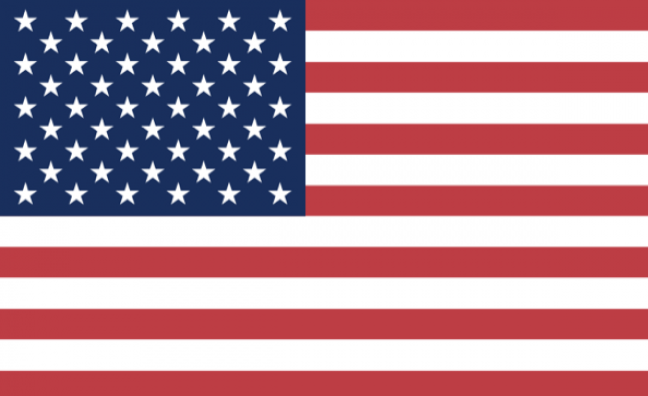Record music sales in the US are reaching that tipping point where 50% of the industry's revenues come from streaming. Figures released by the Recorded Industry Association of America for the first half of 2016 show that streaming now accounts for 47% of total revenues at retail value, boosted by a strong rise in revenues from subscription streaming services.
“For the first time in over a decade, we can report that the American music business grew at a healthy rate in the first half of 2016,” enthused Cary Sherman, Chairman and CEO of the RIAA on the trade group's blog. Sherman added, “This represents a remarkable transformation and reinvention by a business that was principally physical products just six years ago.”
Overall, during the first half, US industry's revenues at retail increased 8.1% on a year-over-year basis to $3.4 billion. The RIAA noted that it was “the strongest industry growth since the late 1990’s.” At wholesale, value increased 5.7% to $2.4 billion.
Digital revenues now account for 78% of total US revenues, with permanent downloads accounting for 31%, physical sales for 20% and revenues from synch for 3% of the total. Paid streaming revenues passed the one billion mark for the first time and Sherman forecasts that music subscriptions to services like Spotify, Apple, and Tidal are “on pace to surpass $2 billion [in revenues] by the end of the year.”
The RIAA includes in the streaming category revenues from subscription services (such as Apple Music, TIDAL and paid versions of Spotify, among others), streaming radio service revenues that are distributed by rights society SoundExchange (like Pandora, SiriusXM, and other Internet radio), and other non-subscription on-demand streaming services (such as YouTube, Vevo, and ad-supported Spotify). “All three formats of streaming music had revenue growth in the first half of 2016,” said Joshua P. Friedlander, RIAA's Senior Vice President, Strategic Data Analysis.
Paid streaming was the unique growth driver as downloads and physical sales (including vinyl) went down during the first half. First half (1H) 2016 streaming music revenues totalled $1.6 billion, up 57% year-over-year, and accounted for 47% of industry revenues against 32% in 1H 2015, while subscription music streaming services grew 112% to $1.01 billion. SoundExchange distributions grew 4% to $403 million, an all-time high for the first half of the year. On-demand ad-supported streaming grew 24% y-o-y to $195 million.
“The entrance of new services like Apple Music and TIDAL, and growth from services like Spotify Premium, helped both revenues and the number of paid subscriptions more than double versus the prior year,” explained Friedlander. Revenues from permanent digital downloads (including albums, single tracks, videos, and kiosk sales) declined 17% to $1.0 billion for H1 2016. The total value of digital albums was $500 million, down 11% versus the same period the prior year, and digital album units were down 15% to 48.2 million. But digital albums sales were more resilient than digital track sales which declined by value 22% to $520 million, with sales volume down 22% to 432 million units.
“Digital albums continued the trend of outperforming individual tracks,” noted Friedlander. Sales of physical formats accounted for $672 million, down 14% from 1H 2015. CDs made up 66% of total physical shipments by value and were down 16.4% in value at $443.9 million. Vinyl albums were down 6% by value for the first half of the year, and accounted for 31% of physical shipments by value at $207.1 million. Synchronisation royalties were $100 million for the first half of the year, virtually flat versus 1H 2015.
The importance of the shift in revenue sources was not lost on James Donio, the President of the Music Business Association (Music Biz), which regroups physical and online music vendors. “The accelerating momentum of streaming services in the first half of this year has helped yield the largest uptick for the US music industry in nearly two decades,” noted Donio, who highlighted “the impressive performance of competitive high-profile services such as Apple Music and TIDAL.”
Donio added, “With the buzz increasing around offerings coming from Amazon and Pandora — not to mention the holiday shopping season bringing the opportunity to gift streaming subscriptions — we are even more optimistic that the second half of 2016 will continue these positive trends.”
Amid this globally positive outlook, Sherman pointed out the on-going discrepancy between YouTube as the most popular music service in the world and its contributions to the industry's bottom-line. “All ad-supported, on-demand revenue streams, both audio and video, collectively generated revenues of only $195 million in the first half of 2016 - just 6%t of the year’s entire music market revenue,” said Sherman, who added that it was time for policy maker sin the US and elsewhere to “to take a fresh look at the broken copyright and licensing systems".
Wrote Sherman: “Reform need not come only from Congress. Progress can come in the form of voluntary agreements as well. For example, does anyone believe that Google is unable to better police its own websites, give artists more control over their works and keep unlicensed songs off YouTube? This is the company, after all, that built the world’s most successful search engine, mapped the world’s streets, is building a driverless car, created artificial intelligence to beat humans at the most challenging game in the world and brags about eight pillars of innovation. Google can do better.”







